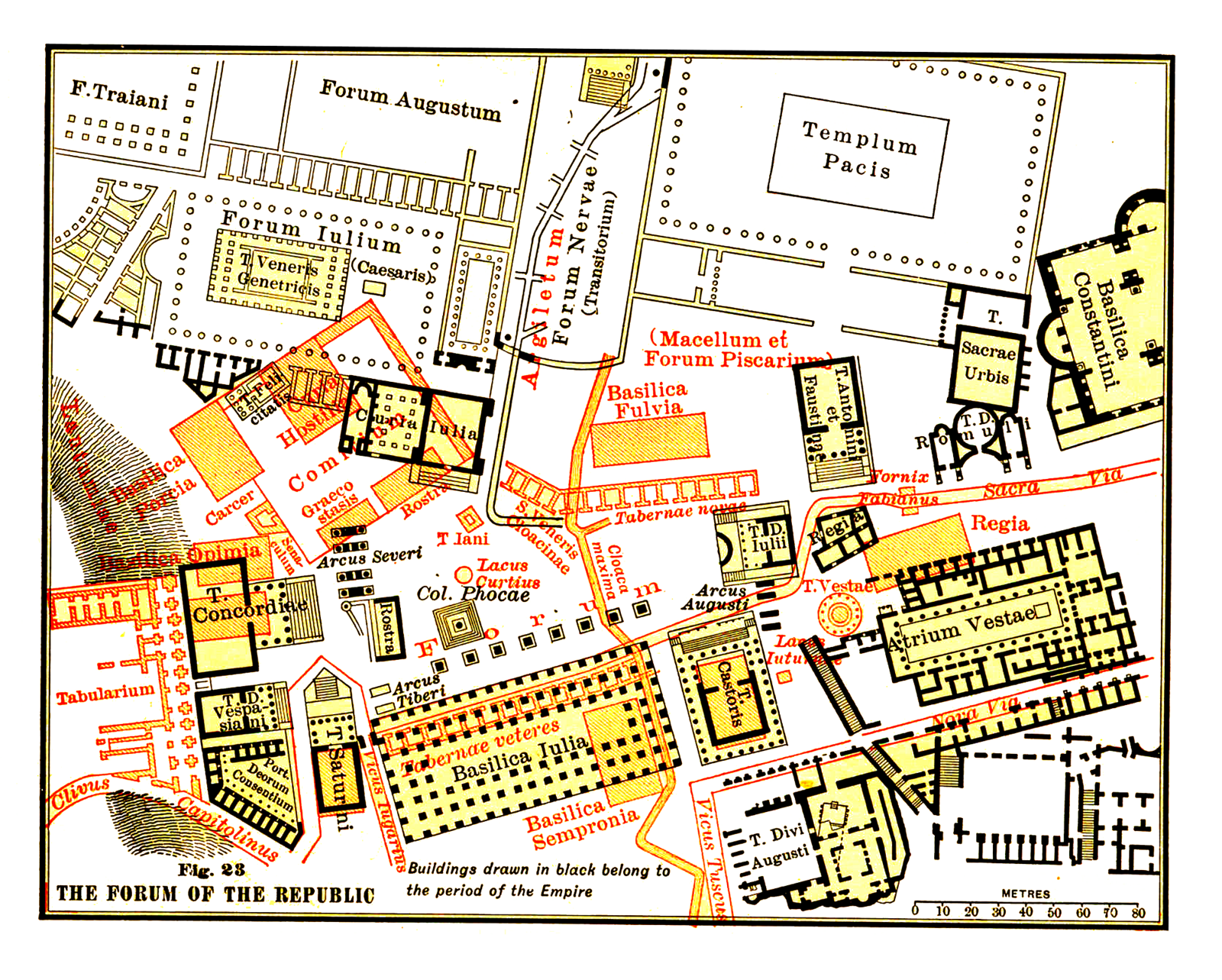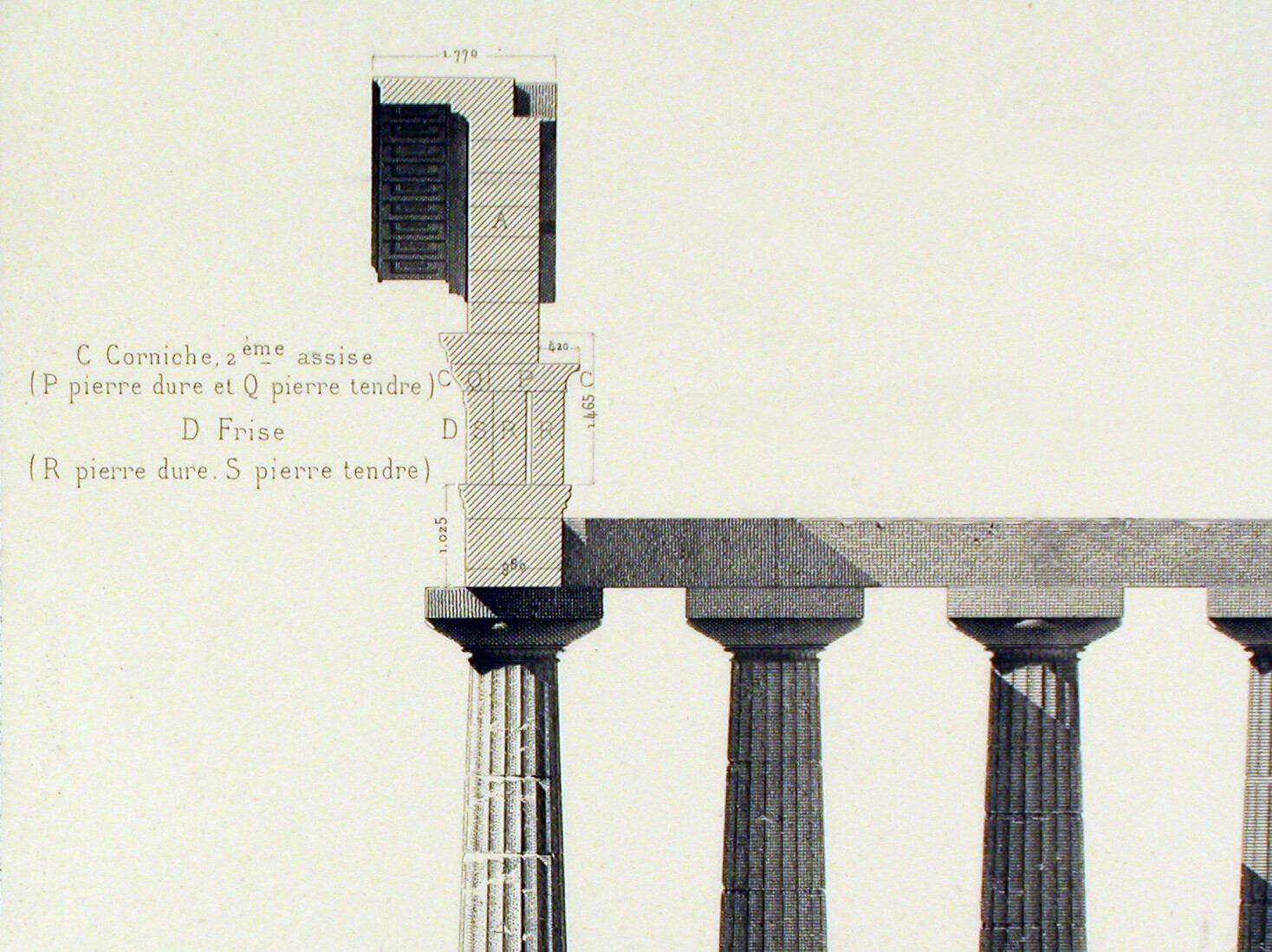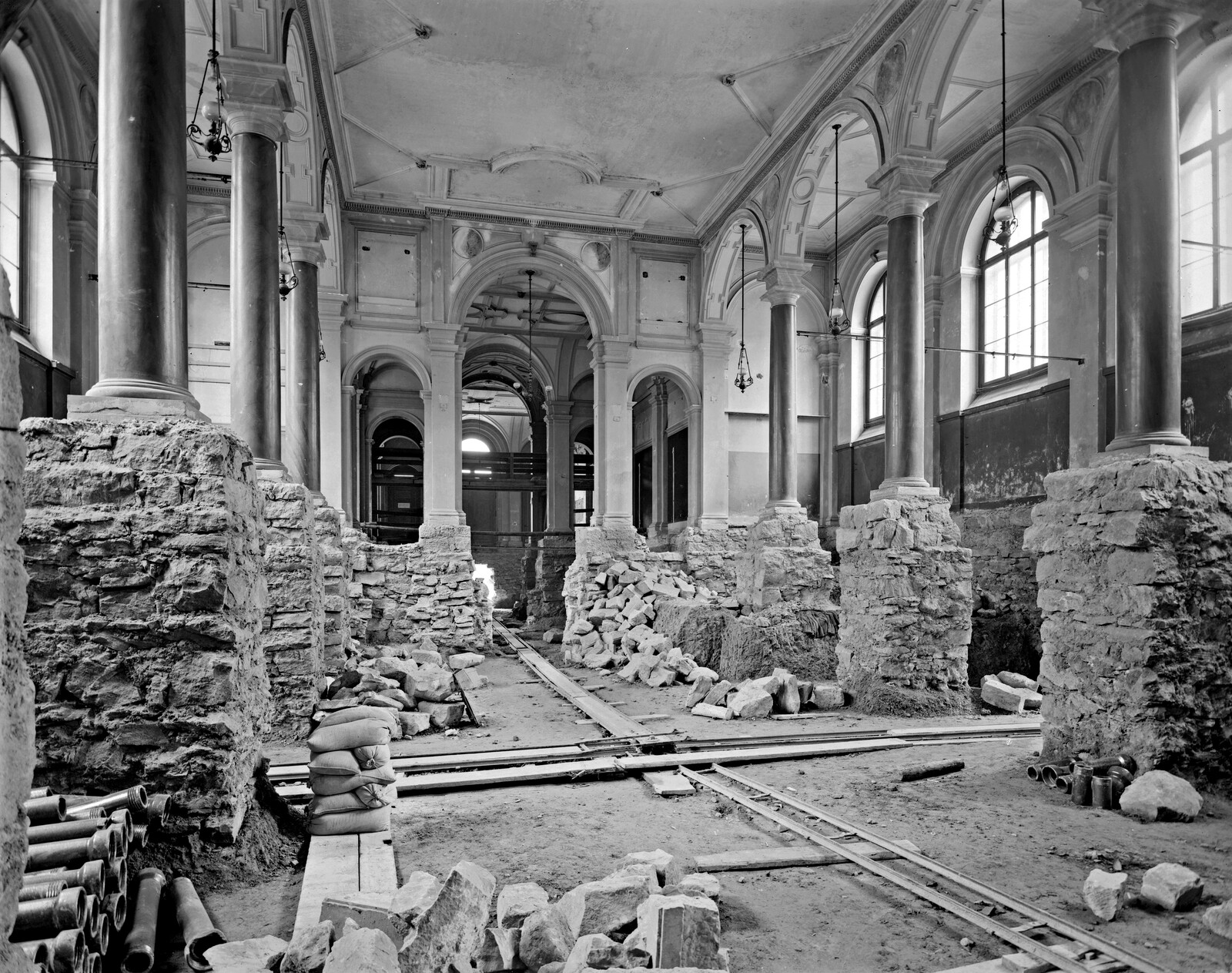Architecture is perhaps the most complex cultural technology that humanity has produced. Nowhere else—from literature to theater and the fine arts—do economic, technical, scientific, artistic, legal, media, religious, and political interests coincide as they do in building. In particular, the field of the “political” has recently gained importance in architecture. This understanding and deployment of architecture as a political technology stands in opposition to the school of thought that treats it as “autonomous,” as well as aesthetes like the Austrian architect Gustav Peichl who once claimed that there is no such thing as democratic or fascist architecture, but only good or bad. Indeed, it is sometimes difficult to link form to ideology. Just as there was an architectural modernism inspired by socialist ideology such as in the Soviet Union or in Germany’s Weimar Republic, there is also a version that was inspired by fascism, such as in Italy. Likewise, just as there is a monarchical and sometimes dictatorial neoclassicism , there is also one that is shaped by republican and democratic urges; the Finnish parliament, for example, built between 1926–1931 by Johan Sigfrid Sirén, looks almost identical to Pyongyang’s Mansudae Assembly Hall, the seat of the North Korean parliament, completed in 1984.1 Despite these and other ambivalences regarding the relationship between form and ideology, the resurgence of the political right has put architecture in the spotlight, such as with debates around Confederate monuments in the United States or the Holocaust memorial in Germany.
What does “the right” or “the left” mean today in architecture? In the wake of a broad neoliberalization of social democracy and a liberalization of conservative positions, a simple left-right political model seems to be incapable of grasping the complexities of the present. Rather than seeking salvation and orientation in a labyrinthine multiperspectivism typical for the postmodern era,2 we can follow—and extend—Slavoj Žižek in duplicating the traditional polarity of left and right to draw a cruciform political model, with one axis charting notions of belonging between universality and patriotism, and the other marking economic beliefs between capitalism and anti-capitalism.3 Virtually all political options of the present and recent past can be entered into this model. In one quadrant on the anti-capitalist left there are anti-globalist, patriotic, anti-cosmopolitan, and at times also latently or openly anti-Semitic leftists,4 and in the other, universalists like Noam Chomsky and Immanuel Wallerstein. In one quadrant on the capitalist right there is the multicultural capitalism of Hillary Clinton, Emmanuel Macron, Angela Merkel, and in the other, capitalism with localism ethnic/cultural peculiarities such as in China, India, and far as things stand, Trumpism. Žižek sees a growing importance in this last position, from which he draws the conclusion that “global capitalism can ideally coexist with particular, cultural identities.”5 Žižek’s model of intersecting axes can also be extended to read many of the political coalitions of the last years and decades, which are as widespread as they are unlikely, such as the combination of the universalist left and multicultural capitalism, which Nancy Fraser once termed “progressive liberalism,” (epitomized by, for example, in the symbiosis of neoliberal financial elites and a “critical” art world). or Similarly, there have been combinations of nationalist and anti-Semitic leftists and nationalist rightists, commonly known as “Querfront” or the “Third Position.”6 Yet Žižek’s model is not only a map for political orientation, but also a valuable tool for understanding the political implications of ideological positions in architecture (theory).


Political model, based on Slavoj Žižek’s cruciform model. Diagram: Stephan Trüby.
Architectural ideologies have a certain compatibility between left and right-wing positions, but hardly between universalist and anti-globalist, regionalist, or nationalist positions. The two main “camps” in architectural discourse are not the duplicated left or right, but Progressive Liberalism and Querfront.
Both the anti-globalist left and the patriotic right agree on an architecture that supports local or regional “identity.” This applies both to the neo-classicist architecture of Rob and Léon Krier and the late Hungarian architect Imre Makovecz, whose “organic” and expressionist architecture has been favored by the right-wing regime of Viktor Orbán.7 Drawing inspiration from National Romanticism, Makovecz became a fierce nationalist and anti-communist, a fan of Miklós Horthy—Hitler’s ally in Hungary—and an anti-Semite. As Eva S. Balogh once made clear, Makovecz repeatedly talked disparagingly about Jewish leftist liberals like Ágnes Heller and György Konrád. When a reporter once asked Makovecz whether his scathing remarks about “Heller and company” had anything to do with their Jewishness, his answer was: “I can’t leave it out, even if I stand on my head. They always have something to criticize the Hungarian nation for; they have a superiority complex; they live with the idea of being the chosen people.”8
In the lower left part of the matrix, Kenneth Frampton’s “Critical Regionalism” could be placed. As distinct from the all-too-theatrical nature of postmodern architecture à la Robert Venturi and Denise Scott Brown—in which Frampton saw little more than a pure affirmation of economic constraints—the British architectural theorist advocates a site-specific architecture that can be haptically experienced and argues for the precise positioning of windows, catering to local conditions, and the avoidance of artificial climate control. Frampton references Martin Heidegger and his postulation that “a boundary is not that at which something stops but, as the Greeks recognized, the boundary is that from which something begins its presencing,” and continues to claim that “While we may well remain skeptical as to the merit of grounding critical practice in a concept so hermetically metaphysical as Being, we are, when confronted with the ubiquitous placelessness of our modern environment, nonetheless brought to posit, after Heidegger, the absolute precondition of a bounded domain in order to create an architecture of resistance.”9 It should be clear to see today how a leftist architectural theory of this kind can effortlessly constitute a Querfront for the nationalist right.
Progressive Liberalism also features potential and de facto coalitions between leftist and right-wing positions. The work of Zaha Hadid and Patrik Schumacher in particular, which spans from an early fascination with revolutionary Russian Suprematism (Hadid)—an architecture of leftist internationalism—to the rightwing libertarianism of (most of) the Trump administration (Schumacher), is indicative in this sense. Hans Sedlmayr, the anti-Semite and NSDAP member (from 1930), once compared the architecture of the French Revolution (Ledoux, Boullée, etc.) with that of the Russian Revolution and concluded that there was an intrinsic connection “between the idea of the spherical building and the ‘bottomless’ spirit of those revolutions.”10 Such a “bottomless” architecture, which the art historian identified in the fantastical drawings of Étienne-Louis Boullée and Claude Nicolas Ledoux, celebrated a happy revival after 1917 with the ungrounded, horizontal Wolkenbügel (“cloud irons”). These two trends found continuity in questioning the idea of arché as it manifests in architecture, and has since been carried forward by deconstructivist architecture, of which Zaha Hadid was a chief proponent. Patrik Schumacher, Hadid’s successor, recently confessed to the mantras of Ayn Rand and Murray Rothbard, and aligned himself with ultra-right-wing libertarians and pro-Trump publishers such as Tom E. Woods. While far from being an anti-Semite or a nationalist right-winger, Schumacher has become a party follower of right-wing market radicalism and an exponent of Social Darwinism.
With both globalism and regionalism, or rather nationalism, cropping up on both left and right, one of the greatest intellectual challenges today is to keep architecture both open to the unexpected, to the “other,” and to strip its global variant of its authoritarian and libertarian facades. One may take, for example, the public path that runs right through the middle of James Stirling’s Neue Staatsgalerie in Stuttgart as exemplary of the type of architectural politics needed today. Similarly, we can think of Michel Foucault’s praise of South American farm house guestrooms as heterotopic space:
The entry door did not lead into the central room where the family lived, and every individual or traveler who came by had the right to open this door, to enter into the bedroom and to sleep there for a night. Now these bedrooms were such that the individual who went into them never had access to the family’s quarters; the visitor was absolutely the guest in transit, was not really the invited guest.11
More metaphorically, one may also think of the architecture in Franz Kafka’s novels, where cells not only have a door to the corridor, but also one that leads to an unexpected spatial continuum. According to Gilles Deleuze and Félix Guattari, “if it is true that each block-segment has an opening or a door onto the line of the hallway—one that is usually quite far from the door or the opening of the following block—it is also true that all the blocks have back doors that are contiguous.” Moreover, “the line of the hallway, the unlimited straight line, can hold other surprises, since it can connect to a certain degree with the principle of the discontinuous circle and the tower (as in the villa in Amerika or in the Castle, which includes a tower as well as a group of small, contiguous buildings).”12
Stirling’s Neue Staatsgalerie, Foucault’s farm house guestrooms, or Kafka’s spatial continua can all be described as “lines of flight,” as spaces that speak of a yearning where otherwise limitation prevails; spaces of subversiveness where traditional national styles are cultivated; spaces of contingencies where an obsession with control otherwise reigns supreme.
Christian Kühn, “Provvisorio,” in “Plenum: Orte der Macht,” special issue, UmBau 27 (2014), 14.
As proposed for example by Armin Nassehi in: Die letzte Stunde der Wahrheit. Warum rechts und links keine Alternativen mehr sind und Gesellschaft ganz anders beschrieben werden muss (Hamburg: Murmann, 2015).
Slavoj Žižek, “The Populist Temptation,” in The Great Regression, ed. Heinrich Geiselberger (Polity, 2017).
For example, Jean-Luc Mélenchon; one could also mention elements of the Anti-Chris-Dercon-Front at the Volksbühne in Berlin. See: Michael Magercord, “Israel, Islam, Sicherheit: Wie die Präsidentschaftskandidaten zu Themen stehen, die der jüdischen Gemeinde wichtig sind,” Jüdische Allgemeine (September 27, 2017), ➝.
Ibid., Žižek, 193.
The “Querfront” or “Third Position” in Germany is epitomized by, for example, formerly left-wing radical, and now right-wing to extreme-right converts like Frank Böckelmann, Jürgen Elsässer, Peter Furth, Horst Mahler, Bernd Rabehl, or even Rüdiger Safranski.
➝.
➝.
Martin Heidegger, “Building, Dwelling, Thinking,” in Poetry. Language, Thought (New York: Harper Colophon, 1971), 154, as quoted in Kenneth Frampton, “Towards a Critical Regionalism: Six Points for an Architecture of Resistance,” in The Anti-Aesthetic: Essays on Postmodern Culture, ed. Hal Foster (Port Townsend, WA: Bay Press, 1983), 24–25.
Hans Sedlmayr, “Die Kugel als Gebäude, oder: Das Bodenlose” (1939), in Revolutionsarchitektur: Klassische Beiträge zu einer unklassischen Architektur, ed. Klaus Jan Philipp, Bauwelt Fundamente 82 (Braunschweig/Wiesbaden: Vieweg, 1990), 126.
Michel Foucault, “Of Other Spaces,” trans. Jay Miskowiec, Diacritics 16, no. 1 (Spring 1986): 26.
Gilles Deleuze and Félix Guattari, Kafka: Toward a Minor Literature, trans. Dana Polan (Minneapolis: University of Minnesota Press, 1986), 73–74.
History/Theory is a collaboration between the Institute for the History and Theory of Architecture (gta), ETH Zürich and e-flux Architecture.
Category
Subject
History/Theory is a collaboration between the Institute for the History and Theory of Architecture (gta), ETH Zurich and e-flux Architecture.





















